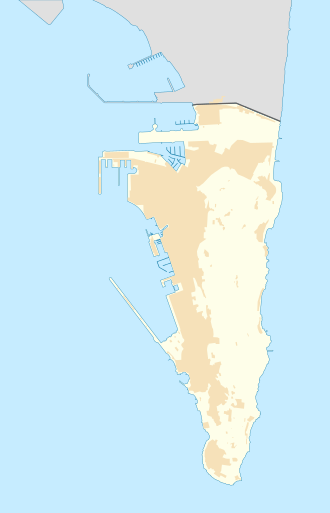| Harding's Battery | |
|---|---|
| Part of Fortifications of Gibraltar | |
| Gibraltar | |
 Restored Harding's Battery in June 2013. | |
 RML 12.5 inch 38 ton gun mounted at Harding's Battery c. 1878. | |
| Site information | |
| Type | Artillery Battery |
| Owner | Government of Gibraltar |
| Open to the public | yes |
| Condition | Refurbished |
| Location | |
Location within Gibraltar. | |
| Coordinates | 36°06′35″N5°20′47″W / 36.109605°N 5.34626°W |
| Site history | |
| Built | 1859 |
| Built by | Government of the United Kingdom |
| Materials | Concrete and brick |
Harding's Battery is a restored artillery battery in the British Overseas Territory of Gibraltar. It is located at Europa Point and includes the Europa Sunken Magazine that is now used as a visitor centre.





